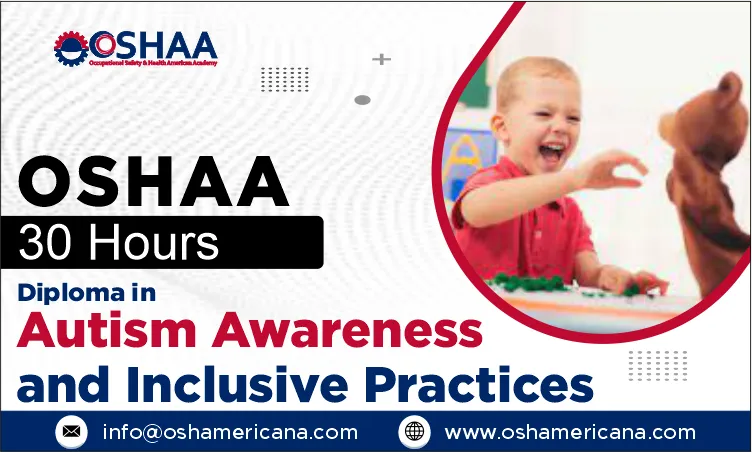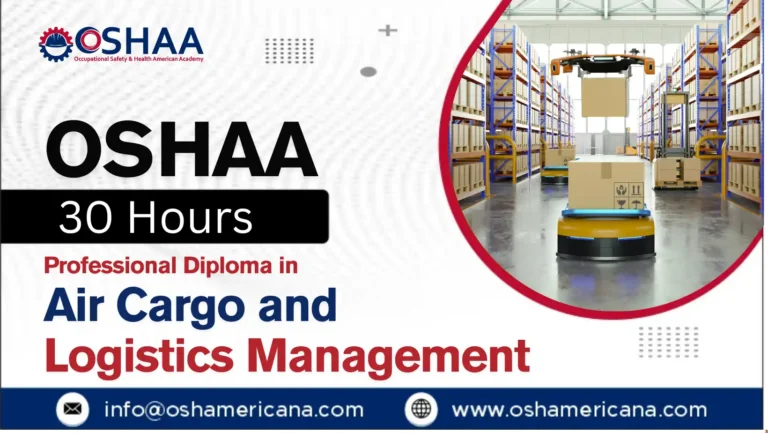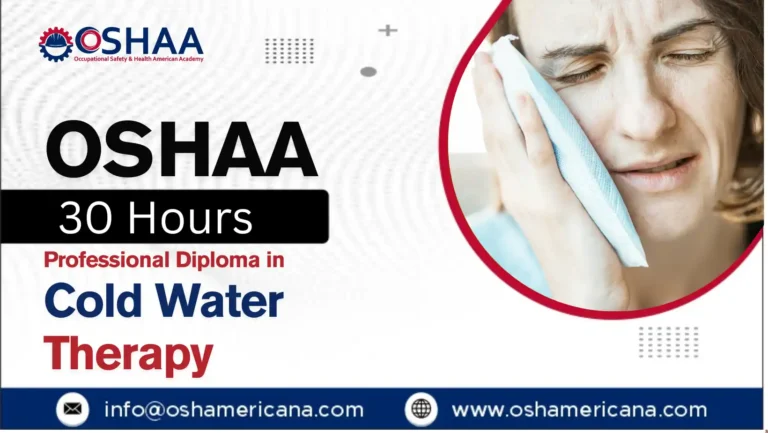Workplace safety and health are paramount in ensuring a productive and hazard-free environment for employees. For those in the general industry, the OSHA 30-Hour General Industry Safety and Health course provides an extensive training program designed to equip workers and supervisors with critical knowledge and skills to maintain a safe workplace.
The OSHA 30-Hour General Industry Safety and Health course is part of the Occupational Safety and Health Administration (OSHA) Outreach Training Program. It aims to promote workplace safety and health, significantly reducing job-related injuries and illnesses. OSHA 30-Hour General Industry Safety and Health is particularly beneficial for supervisors, safety officers, and workers in various industries who are responsible for identifying and mitigating workplace hazards.
The OSHA 30-Hour General Industry Safety and Health course is an invaluable resource for those dedicated to maintaining a safe and healthy work environment. By equipping participants with comprehensive knowledge and practical skills, this course significantly contributes to reducing workplace hazards and ensuring compliance with OSHA standards.
Upon successful completion, participants receive an OSHA 30-Hour General Industry course completion card, signifying their commitment to workplace safety and health. Whether you are a safety professional, supervisor, or worker, OSHA 30-Hour General Industry Safety and Health is an essential step toward fostering a safer and more productive work environment.
OSHA 30-Hour General Industry Safety and Health
To enroll in the OSHA 30-Hour General Industry Safety and Health Course, learners are expected to meet the following criteria:
Study Units
Learning Outcomes
Introduction to OSHA
- Learning Outcomes:
- Understand the purpose and mission of OSHA 30-Hour General Industry Safety and Health.
- Recognize employee rights and employer responsibilities under OSHA.
- Familiarize with OSHA 30-Hour General Industry Safety and Health standards, regulations, and the inspection process.
- Identify the steps to file an OSHA complaint.
Safety and Health Programs
- Learning Outcomes:
- Develop effective workplace safety and health programs.
- Understand the elements of management commitment and employee involvement.
- Identify methods for hazard prevention and control.
- Implement effective training programs for employees.
Hazard Communication
- Learning Outcomes:
- Comprehend the requirements of the Hazard Communication Standard (HCS).
- Properly label hazardous chemicals and understand Safety Data Sheets (SDS).
- Implement effective hazard communication programs in the workplace.
- Train employees on recognizing and responding to chemical hazards.
Walking and Working Surfaces
- Learning Outcomes:
- Identify common hazards associated with walking and working surfaces.
- Implement measures for fall protection and ladder safety.
- Understand housekeeping and maintenance requirements to prevent slips, trips, and falls.
- Develop strategies for hazard prevention and control.
Electrical Safety
- Learning Outcomes:
- Recognize electrical hazards in the workplace through OSHA 30-Hour General Industry Safety and Health.
- Understand and implement Lockout/Tagout (LOTO) procedures.
- Ensure proper use of electrical equipment and Personal Protective Equipment (PPE).
- Train employees on safe electrical practices.
Machine Guarding
- Learning Outcomes:
- Identify machine hazards and the types of machine guards.
- Implement proper guarding techniques and safe work practices.
- Understand the requirements for preventive maintenance.
- Train employees on the proper use of machine guards.
Ergonomics
- Learning Outcomes:
- Recognize ergonomic risk factors and hazards.
- Implement ergonomic solutions to prevent musculoskeletal disorders.
- Understand the principles of workstation design and task modification.
- Involve employees in developing and maintaining ergonomic practices.
Fire Safety
- Learning Outcomes:
- Develop and implement fire prevention strategies.
- Understand the components of an effective emergency action plan.
- Properly use and maintain fire extinguishers.
- Train employees on emergency evacuation procedures.
Industrial Hygiene
- Learning Outcomes:
- Recognize various industrial hygiene hazards, including chemical, physical, biological, and ergonomic hazards.
- Conduct exposure assessments and implement control measures.
- Understand the use of respiratory protection and other PPE.
- Develop and implement industrial hygiene programs.
Material Handling
- Learning Outcomes:
- Identify safe practices for manual and mechanical material handling.
- Implement measures to prevent back injuries and other musculoskeletal disorders.
- Use proper lifting techniques and equipment.
- Train employees on safe material handling practices.
Personal Protective Equipment (PPE)
- Learning Outcomes:
- Select appropriate PPE for various workplace hazards.
- Understand the proper use, maintenance, and limitations of PPE.
- Train employees on the correct usage of PPE.
- Implement PPE programs in compliance with OSHA standards.
Confined Spaces
- Learning Outcomes:
- Identify hazards associated with confined spaces.
- Understand the requirements for entry permits and monitoring equipment.
- Implement emergency rescue procedures.
- Train employees on safe entry and work practices in confined spaces.
The OSHA 30-Hour General Industry Safety and Health course offers numerous advantages for both employees and employers. It provides a comprehensive understanding of workplace safety and health regulations, equipping participants with the knowledge and skills needed to create safer working environments. Here are some of the key benefits of this course:
1. Enhanced Safety Awareness
- Proactive Hazard Identification: Participants learn to recognize potential hazards before they cause harm.
- Informed Decision-Making: Increased awareness enables better decision-making regarding safety practices and risk management.
2. Improved Compliance with OSHA Standards
- Regulatory Knowledge: Participants gain a thorough understanding of OSHA standards and regulations.
- Avoiding Penalties: Compliance with OSHA 30-Hour General Industry Safety and Health standards helps avoid costly fines and legal issues.
3. Reduction in Workplace Accidents and Injuries
- Preventative Measures: Training emphasizes the importance of preventative measures, leading to a decrease in workplace accidents.
- Safer Work Environment: A safer work environment reduces the likelihood of injuries, benefiting both employees and employers.
4. Increased Productivity and Efficiency
- Fewer Interruptions: Reduced accidents and injuries mean fewer interruptions to workflow and operations.
- Employee Confidence: Employees who feel safe are more likely to be productive and engaged in their work.
5. Enhanced Employee Morale and Retention
- Commitment to Safety: Demonstrating a commitment to safety shows employees that their well-being is a priority.
- Job Satisfaction: A safer workplace contributes to higher job satisfaction and employee retention.
6. Cost Savings
- Lower Insurance Premiums: A safer workplace can lead to lower workers’ compensation insurance premiums.
- Reduced Costs: Fewer workplace injuries and accidents mean lower medical costs and less time lost due to injuries.
7. Professional Development and Career Advancement
- Skill Enhancement: Participants develop valuable safety skills and knowledge.
- Career Opportunities: Completion of the OSHA 30-Hour General Industry Safety and Health can enhance career prospects and open up opportunities for advancement in safety-related roles.
8. Legal and Ethical Responsibility
- Ethical Obligations: Employers have a moral obligation to provide a safe working environment.
- Legal Requirements: Compliance with OSHA 30-Hour General Industry Safety and Health standards helps fulfill legal responsibilities related to workplace safety.
9. Development of a Safety Culture
- Safety-First Mentality: Training promotes a culture where safety is a top priority.
- Employee Involvement: Encourages active participation from employees in safety programs and initiatives.
10. Comprehensive Understanding of Safety and Health Programs
- Holistic Approach: The OSHA 30-Hour General Industry Safety and Health covers a wide range of safety topics, providing a well-rounded understanding of workplace safety and health.
- Effective Implementation: Participants learn how to effectively implement safety and health programs tailored to their specific workplace needs.
The OSHA 30-Hour General Industry Safety and Health course is an invaluable investment for both employees and employers. By providing a comprehensive education on workplace safety and health, this course not only helps in complying with OSHA standards but also fosters a safer, more productive, and engaged workforce. Whether you are a safety professional, supervisor, or worker, this course offers the tools and knowledge necessary to create and maintain a safer working environment.
The OSHA 30-Hour General Industry Safety and Health course is designed for a wide range of professionals across different industries. It is especially valuable for individuals responsible for workplace safety, employee wellbeing, compliance, and risk management. The training provides a strong foundation in health and safety regulations, hazard prevention, and compliance strategies, giving participants the tools they need to create safer working environments.
1. Supervisors and Managers
- Frontline Supervisors – Oversee daily operations and must identify risks while ensuring safe practices among their teams.
- Middle and Senior Managers – Develop and implement health and safety policies, monitor compliance, and maintain consistent safety standards across the organisation.
2. Safety Professionals
- Safety Officers – Monitor compliance, carry out inspections, and address workplace hazards.
- Safety Coordinators – Manage safety programmes, deliver training, and ensure adherence to regulations.
3. Health and Safety Committee Members
- Committee Members – Support workplace safety initiatives, promote awareness, and help shape policies.
- Safety Representatives – Act as a voice for employees, raising concerns and working with management to improve workplace safety.
4. Maintenance and Facilities Personnel
- Maintenance Technicians – Keep equipment, machinery, and tools in safe working condition through regular checks and repairs.
- Facilities Managers – Ensure workplace environments, buildings, and infrastructure are hazard-free and compliant with safety regulations.
5. Human Resources Professionals
- HR Managers and Officers – Develop induction and training programmes that include health and safety.
- Training and Development Staff – Incorporate safety education into broader staff training initiatives.
6. Construction and Manufacturing Personnel
- Skilled Tradespeople – Such as welders, electricians, mechanics, and machine operators working in high-risk environments.
- General Operatives and Labourers – Need practical knowledge of safe practices to reduce accidents and injuries.
7. Small Business Owners
- Entrepreneurs and Proprietors – Responsible for ensuring their businesses comply with OSHA standards while maintaining a safe environment for employees.
8. New Employees and Entry-Level Workers
- Onboarding Staff – New hires who need to learn safe practices during induction.
- Apprentices and Interns – Those starting their careers and requiring a solid introduction to workplace safety.
9. Union Representatives
- Union Leaders and Officials – Advocate for workers’ rights, ensuring employers meet health and safety standards while protecting employee wellbeing.
10. Environmental Health and Safety (EHS) Professionals
- EHS Specialists – Oversee environmental and occupational safety programmes within organisations.
- Risk and Compliance Managers – Identify hazards, assess risks, and implement effective safety strategies.
The OSHA 30-Hour General Industry Safety and Health course is tailored to meet the needs of a diverse group of professionals who play a crucial role in maintaining and promoting workplace safety. By targeting supervisors, safety professionals, committee members, maintenance personnel, HR professionals, skilled tradespeople, business owners, new employees, union representatives, and EHS professionals, this course ensures that comprehensive safety knowledge is disseminated across all levels of an organization. This broad reach helps create a safer, more compliant, and more productive working environment for everyone involved.







